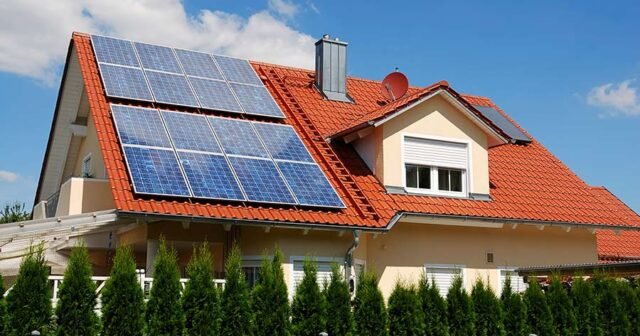In the quiet town of Solville, Maria gazed proudly at her newly installed solar panels, their sleek surfaces gleaming under the golden sun. She had invested her savings, dreaming of a sustainable future and lower energy bills. But one stormy night, a fallen branch scratched her panels, and dust from a nearby construction site dulled their shine. Maria learned the hard way that solar panels, though sturdy, need care to thrive. Her story is a reminder for all solar panel owners: to protect your solar panels is to safeguard your investment and the planet’s future. This article explores practical, actionable ways to maintain and shield your solar panels, ensuring they perform optimally for decades.
Why Protecting Your Solar Panels Matters
Solar panels are a significant investment, both financially and environmentally. Proper maintenance not only extends their lifespan—often 25–30 years—but also maximizes energy output and efficiency. Neglecting them can lead to reduced performance, costly repairs, or even premature replacement. From harsh weather to debris buildup, various factors threaten your panels’ longevity. Let’s dive into how you can protect your solar panels effectively.
The Impact of Neglect
Unprotected panels face risks like scratches, dirt accumulation, and weather-related damage. These issues can reduce energy production by up to 20%, according to studies from the National Renewable Energy Laboratory. Regular care mitigates these risks, ensuring consistent performance and savings.
Key Threats to Solar Panels
Understanding the enemies of your solar panels is the first step to protecting them. Here are the primary threats:
Environmental Factors
Weather elements like hail, heavy rain, snow, and extreme heat can stress your panels. Dust, pollen, bird droppings, and leaves also accumulate, blocking sunlight and reducing efficiency.
Physical Damage
Falling branches, debris, or improper handling during maintenance can cause scratches or cracks. Even small micro-cracks can impair panel performance over time.
Electrical Issues
Faulty wiring, inverter failures, or shading from nearby trees can disrupt energy production. Regular inspections catch these issues early.
How to Protect Your Solar Panels: Practical Tips
To keep your panels in top shape, follow these actionable strategies. Each step is designed to address specific threats and maintain efficiency.
Regular Cleaning
Dirt and debris are silent efficiency killers. Clean your panels every 6–12 months, depending on your environment. Use a soft brush, mild soap, and water to avoid scratching the surface. Avoid abrasive materials or high-pressure washers, which can damage the glass. For hard-to-reach panels, consider hiring professionals with specialized equipment.
Cleaning Safety Tips
- Clean during early morning or late afternoon to avoid hot surfaces.
- Use deionized water to prevent mineral buildup.
- Never walk on panels to avoid cracks.
Weatherproofing Your Panels
Extreme weather can take a toll, but you can minimize damage. Install protective covers or hail guards in storm-prone areas. Ensure your panels are mounted securely to withstand high winds. In snowy regions, use a soft broom to gently remove snow, avoiding excessive force.
Seasonal Maintenance Checklist
- Spring: Clear pollen and debris; inspect for winter damage.
- Summer: Monitor for heat stress; ensure proper ventilation.
- Fall: Remove leaves and check for shading from overgrown trees.
- Winter: Clear snow carefully; inspect for ice-related damage.
Regular Inspections
Schedule professional inspections annually to catch issues like loose connections, inverter malfunctions, or micro-cracks. Use a reputable technician familiar with your panel type. Between professional checks, visually inspect for debris, shading, or damage after major weather events.
Pest and Wildlife Protection
Birds, squirrels, and rodents can damage wiring or nest under panels. Install critter guards or mesh barriers around the panel edges. Regularly check for signs of nesting or chewed wires to prevent electrical issues.
Monitoring Performance
Invest in a monitoring system to track energy output. Sudden drops in performance can indicate dirt buildup, shading, or technical issues. Most modern inverters come with apps that provide real-time data, helping you act quickly if problems arise.
Choosing the Right Solar Panel Protection Products
The market offers various products to shield your panels. Here’s a quick guide:
Protective Coatings
Anti-reflective or hydrophobic coatings reduce dust buildup and improve efficiency. Ensure the coating is compatible with your panel’s material to avoid warranty issues.
Surge Protectors
Install surge protectors to shield your system from lightning strikes or power surges. These devices are inexpensive and can save costly repairs.
Mounting Systems
Choose durable, corrosion-resistant mounting systems suited to your climate. Stainless steel or aluminum mounts are ideal for coastal or humid areas.
The Role of Professional Maintenance Services
While DIY care is effective, professional services offer expertise and peace of mind. Certified technicians can perform deep cleanings, electrical diagnostics, and structural checks. Research local providers with strong reviews and certifications from organizations like the North American Board of Certified Energy Practitioners (NABCEP).
When to Call a Professional
- After severe weather events.
- If you notice a significant drop in energy output.
- For complex repairs like inverter replacements or wiring issues.
Insurance and Warranties: Added Layers of Protection
Check your solar panel warranty—most cover 20–25 years for performance and 10–12 years for defects. Understand what’s included, as neglect or improper cleaning may void it. Additionally, consider solar panel insurance to cover damage from storms, theft, or vandalism. Compare policies to ensure comprehensive coverage.
Conclusion
Maria’s journey in Solville taught her that solar panels are more than an investment—they’re a commitment to sustainability. By taking steps to protect your solar panels, you ensure they deliver clean energy for decades. From regular cleaning to professional inspections, each action preserves efficiency and maximizes returns. Embrace these practices, and your panels will shine brightly, powering your home and the planet’s future with resilience and reliability.
If you are interested then click http://quicktrends.co/







